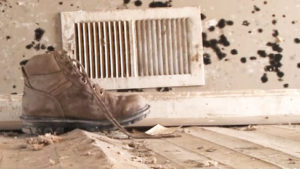 2 inches of water can cost you $7800
2 inches of water can cost you $7800
Floods are the most common natural disaster in the U.S. The reality is that anywhere it rains, it can flood. Many conditions can result in a flood:
hurricanes, broken levees, outdated or clogged drainage systems and rapid accumulation of rainfall.
Frequently, homeowners who have in the past been required by their mortgage to keep flood insurance cancel their insurance once their flood zone is updated to a lower risk classification. It’s understandable; nobody likes being forced to do something they don’t want to. Ironically, the cost for flood insurance in these moderate-to-low risk areas is often a third of the cost when it was required. In addition, nearly 25% of flood insurance claims come from these moderate-to-low risk areas.
Even dry desert areas where one would least expect a flood are at risk. When arid regions are inundated with rain, the ground cannot absorb enough water and massive destruction can occur from the rapidly moving waters. Flash floods are the #1 weather-related killer in the U.S. They can roll boulders, tear out trees and destroy buildings and bridges.
For more information, see the National Flood Insurance Program Website http://www.floodsmart.gov or contact our office.

 It’s important to be prepared for flooding no matter where you live, but particularly if you are in a low-lying area, near water or downstream from a dam. Even a very small stream or dry creek bed can overflow and create flooding. There are three steps that every individual can take now, to better prepare themselves and their families:
It’s important to be prepared for flooding no matter where you live, but particularly if you are in a low-lying area, near water or downstream from a dam. Even a very small stream or dry creek bed can overflow and create flooding. There are three steps that every individual can take now, to better prepare themselves and their families: